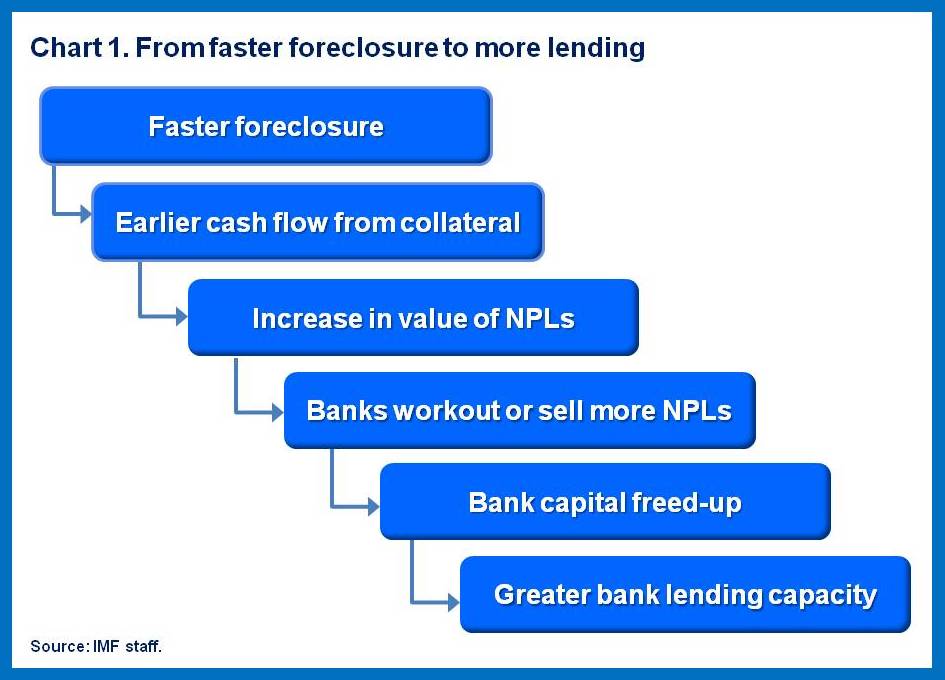A stock in excess of €900 billion of nonperforming loans continue to clutter the European banking system, impeding economic growth. This issue remains a key challenge for policy makers. As we show in our latest Global Financial Stability Report, part of the solution to address this legacy is an upgrade in legal systems. Current inefficiencies—long foreclosure times and insolvency procedures—are a reason for the gap between the value of loans on bank balance sheets and the price investors are willing to pay. A reliable legal environment and an efficient judicial system maximize the value of nonperforming loans (NPLs), reduce the value gap and give banks greater incentive to get NPLs off the books. Our analysis, using time to foreclose as a proxy for effective insolvency regimes, shows there is a large upside for new lending capacity in the euro area (Chart 1).
Slow foreclosure times impede rapid NPL resolution leading to higher NPL ratios. For example, in Italy, the current time to foreclose of four years is twice the current euro area average. Italy’s average NPL ratio of about 11% is 1.6 times the euro area average.
Reforms could unleash almost € 600 billion in new lending
Creating incentives for the effective restructuring or resolution of nonperforming loans by achieving a foreclosure time of one year maximum in each country can create a new lending potential of about €600 billion for the euro area as a whole. Even more striking, however, is the large potential positive impact: upwards of €373 billion in extra lending in the most vulnerable countries of the euro area, where collateral foreclosure time is higher on average (Chart 2).
Countries should consider improving insolvency regimes as a tool to reduce the number of non-performing loans and help banks lend again.





